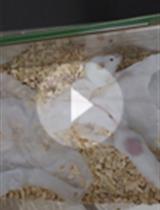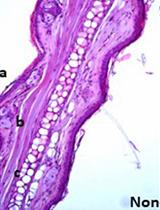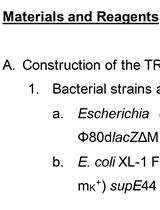- Submit a Protocol
- Receive Our Alerts
- EN
- EN - English
- CN - 中文
- Protocols
- Articles and Issues
- For Authors
- About
- Become a Reviewer
- EN - English
- CN - 中文
- Home
- Protocols
- Articles and Issues
- For Authors
- About
- Become a Reviewer
Non-invasive Intratracheal Instillation in Mice
Published: Vol 5, Iss 12, Jun 20, 2015 DOI: 10.21769/BioProtoc.1504 Views: 18050
Reviewed by: Andrea PuharMaureen WirschellAnonymous reviewer(s)

Protocol Collections
Comprehensive collections of detailed, peer-reviewed protocols focusing on specific topics
Related protocols

Visualizing Hypoxia in a Murine Model of Candida albicans Infection Using in vivo Biofluorencence
José Pedro Lopes and Constantin F. Urban
Aug 5, 2019 3920 Views

RNA Extraction from Ears and Draining Lymph Nodes of Mice Infected with Leishmania amazonensis
Emilie Giraud and Evie Melanitou
Jun 5, 2020 4004 Views

TetR Regulated in vivo Repression Technology to Identify Conditional Gene Silencing in Genetically Engineerable Bacteria Using Vibrio cholerae Murine Infections as Model System
Franz G. Zingl [...] Stefan Schild
Oct 5, 2020 2114 Views
Abstract
The intratracheal instillation technique is used to deliver a variety of agents to the lungs ranging from pathogens (bacteria, viruses), toxins, to therapeutic agents. To model lung inflammation and injury, LPS can be administrated via intranasal, intratracheal, or aerosol approaches. Each technique has its limitations. The intratracheal technique can involve the non-invasive instillation method (via the oro-tracheal route) or a direct injection into the trachea. Here, we describe an optimized method for direct visual instillation of LPS via the non-invasive oro-tracheal route.
Keywords: Non-invasiveMaterials and Reagents
- Lipopolysaccharide (LPS) (Sigma-Aldrich, catalog number: L2880 )
- Ketamine (Henry Schein, catalog number: 010177 ) and Xylazine (Henry Schein, catalog number: 033198 ) for mouse anesthesia
- Phosphate buffered saline (PBS) (see Recipes)
Equipment
- Intubating platform (Figure 1), which can be constructed using 0.5 inch (1.3 cm) boards. The longer board should be roughly 6 inches (15 cm) wide x 14 inches (36 cm) long. The smaller supporting board should be roughly 6 inches (15 cm) wide x 7 inches (18 cm) long. On the back side of the longer board, nail two rectangular pieces of wood that are roughly 2.5 inches (6.4 cm) x 1.5 inches (3.8 cm) in size, rendering a groove that is slightly wider than 0.5 inches (1.3 cm). The smaller board fits into this groove, thus producing the 45 degree angle of the intubating platform. Finally, cut a V-shaped groove on the top of the platform, and string suture (3-0 or larger) between 2 pushpins (or nails). Alternatively, a rodent intubation stand can be purchased (Braintree Scientific, Inc., catalog number RIS 100).


Figure 1. Representative Model of Intubating Platform - Fiber-optic illuminator (Cole Parmer Fiber-Lite, model: 9745-00 )
- Curved blunt-ended forceps
- Polyethylene tubing PE-10 (Intramedic, catalog number: 427401 )
- Insulin syringe with attached needle (sterile)
- Hands-free binocular magnifiers
- Warming pad (Gaymar T/Pump Classic, model: TP650 ) @ 38 °C setting
Procedure
This protocol describes the procedure for the direct visual instillation method for intratracheal (i.t.) instillation (Su et al., 2004) of LPS.
- Preparation
All protocols using live animals must be approved by an Institutional Animal Care and Use Committee and must follow officially approved procedures for the care and use of laboratory animals. Furthermore, experimental animals treated with biohazard materials should be handled and disposed using recommended animal biosafety procedures. When appropriate, the person(s) handling the animals must have official certification for performing procedures on animals and for submitting protocols for ethical approval.- Weigh the animal on a balance to calculate the LPS dose required for each mouse.
- In an Eppendorf tube, prepare the desired LPS solution (diluted in PBS) in a volume not to exceed 50 μl. The LPS concentration will vary depending on the experimental goals, but is usually between 1 mg/kg (mild lung injury) and 10 mg/kg (severe lung injury). Stock solutions of LPS can be prepared, aliquoted, and frozen at -80 °C to help standardize instillations.
- Attach 1 inch (2.5 cm) of PE-10 tubing to the insulin needle and syringe and load it with the LPS solution. Importantly, syringe should be pre-loaded with at least 50 μl of air to insure that all of the liquid volume is expelled from the needle.
- Anesthetize animals with Ketamine (50-80 mg/kg) and Xylazine (8-12 mg/kg) injected intraperitoneal using insulin syringes. The anesthetics may be mixed in the same syringe. This anesthetic dose should maintain anesthesia for 20-30 min.
- Weigh the animal on a balance to calculate the LPS dose required for each mouse.
- Intratracheal Instillation
- Check the level of anesthesia using a paw pinch stimulus a few minutes after delivery of the anesthetics. Once adequate anesthesia is observed, suspend the mouse by its incisors in the supine position on the intubating platform (Figure 2A).
- Turn on the fiber-optic illuminator and position it over the trachea. (Figure 2A-B)
- Using curved blunt-ended forceps, carefully grasp the tongue and in a upward and leftward motion, position the tongue to gain visualization of the larynx. Hands-free binocular magnifiers can be used for improved visualization of the larynx.
- Position the fiber-optic light source to trans-illuminate the tracheal opening
- Insert the PE-10 tubing (attached to the insulin needle and syringe) 0.5-1 cm into the trachea and instill the LPS solution (volume not to exceed 50 µl).
- To avoid the intratracheal instillate from escaping the trachea, leave the PE-10 tubing in place for 5 sec.
- Maintain the mouse in the same position on the intubating platform for at least 30 sec.
- Remove the mouse and place it prone on a heating pad for recovery.

Figure 2. A-B. Mouse positioned on the intubation platform. C. Bronchoalveolar lavage (BAL) accumulation of white blood cells (WBC) 48 h after LPS instillation at dose of 5 mg/kg. WBCs were quantified with a Coulter Counter.
- Check the level of anesthesia using a paw pinch stimulus a few minutes after delivery of the anesthetics. Once adequate anesthesia is observed, suspend the mouse by its incisors in the supine position on the intubating platform (Figure 2A).
Recipes
- Phosphate buffered saline (PBS)
0.2g/L KH2PO4
2.16 g/L Na2HPO4
0.2 g/L KCl
8.0 g/L NaCl
Sterile filtered
Acknowledgments
This work was supported by the National Heart, Lung, and Blood Institute grant R01 HL107386 (M.R.L.).
References
- Su, X., Looney, M., Robriquet, L., Fang, X. and Matthay, M. A. (2004). Direct visual instillation as a method for efficient delivery of fluid into the distal airspaces of anesthetized mice. Exp Lung Res 30(6): 479-493.
Article Information
Copyright
© 2015 The Authors; exclusive licensee Bio-protocol LLC.
How to cite
Ortiz-Muñoz, G. and Looney, M. R. (2015). Non-invasive Intratracheal Instillation in Mice. Bio-protocol 5(12): e1504. DOI: 10.21769/BioProtoc.1504.
Category
Immunology > Animal model > Mouse
Microbiology > Microbe-host interactions > In vivo model
Do you have any questions about this protocol?
Post your question to gather feedback from the community. We will also invite the authors of this article to respond.
Tips for asking effective questions
+ Description
Write a detailed description. Include all information that will help others answer your question including experimental processes, conditions, and relevant images.
Share
Bluesky
X
Copy link







